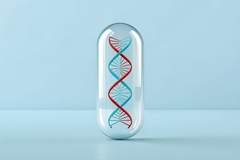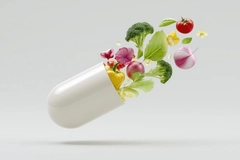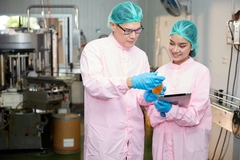No psilocybin: Research finds undisclosed psychoactives in “magic” mushroom edibles

Analysis of 12 magic mushroom edibles reveals they do not contain psilocybin, the psychedelic compound produced by these mushrooms. Instead, many products contained undisclosed active ingredients. The researchers studied gummies and chocolates sold in Oregon, US.
Some of these products contained syndelics — synthetic psychedelics. The researchers caution that the toxicology and pharmacology of these compounds are unknown. Undisclosed ingredients also included caffeine and botanical extracts from hemp and kava.
“Syndelics represent a rapidly growing area of drug design, where medicinal chemists create novel compounds inspired by known psychedelic agents like psilocybin and LSD,” says Richard van Breemen, professor of pharmaceutical sciences at the Oregon State University College of Pharmacy.
“Although this approach offers therapeutic potential for the discovery of drugs that might be useful for treating a range of mental health conditions, any new drug entity requires years of development to evaluate human safety and efficacy, and premature exposure to these compounds poses significant public health risks due to unknown pharmacology and toxicity.”
Psychedelic safety
For the study published in JAMA Network Open, Van Breemen collaborated with a testing laboratory and scientific instrument manufacturer to analyze the products’ content.
In addition to syndelics, the researchers found synthetic tryptamines, muscimol from the magic mushroom Amanita muscaria, and other adulterants.
Last year, researchers warned that unregulated sales of A. muscaria could endanger public health. Their review of mouse studies suggested that muscimol can be more toxic than fentanyl, cocaine, and PCP (phencyclidine).
 The presence of undisclosed adulterants in these products, especially syndelics inspired by LSD or psilocybin, raises significant safety concerns.The study notes that some products contained psilocin, which is created when psilocybin is converted in the body. However, they did not find psilocybin or its other biosynthetic precursors. Therefore, the researchers say this suggests adulteration with synthetic psilocin.
The presence of undisclosed adulterants in these products, especially syndelics inspired by LSD or psilocybin, raises significant safety concerns.The study notes that some products contained psilocin, which is created when psilocybin is converted in the body. However, they did not find psilocybin or its other biosynthetic precursors. Therefore, the researchers say this suggests adulteration with synthetic psilocin.
They say that the presence of undisclosed adulterants, especially syndelics inspired by LSD or psilocybin, raises “significant safety concerns.”
The US has classified LSD as a Schedule 1 controlled substance. This means that it has a high potential for abuse, and there is currently accepted medical use. However, psilocybin is legal for medical use in Oregon.
Magic mushroom investigations
Since 2019, the number of people using psilocybin has gone up substantially. This is likely related to studies linking it to benefits in treating depression and substance use disorders. Moreover, some US states have decriminalized or legalized the compound.
Earlier this year, researchers called for better education, tracking, and health system preparedness after spotting a substantial increase in poison center calls on psilocybin use between 2019 and 2023.
Van Breemen adds that in 2024, the Centers for Disease Control and Prevention (CDC) reported 180 emergency cases related to magic mushroom products, specifically from the brand Diamond Shruumz. These cases covered 34 states and included 73 hospitalizations and three potentially associated deaths.
The CDC and US FDA analyzed the brand’s chocolate bars, cones, and gummies and found they contained O-acetylpsilocin, psilocin, kavalactones, pregabalin, and muscimol. Diamond Shruumz products were recalled, and the FDA advised not to eat them.
Advancing detection
Van Breemen notes that for safety, psilocybin products require both analytical standardization and production that follows current Good Manufacturing Practices.
“Advances in analytical chemistry are needed to detect new syndelics and other adulterants in consumer products, to expose misbranding, to support law enforcement and regulatory agencies, and to assist poison control centers and hospitals as they encounter overdoses caused by unknown compounds.”
Collaboration between academia, public health, and industry is key to developing and validating detection methods with analytical instruments like biomedical mass spectrometry.
As different types of labs have unique capabilities, Van Breemen believes combining them is needed for the best analyses and real-time public health surveillance.


















